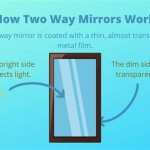How To Screen Mirror iPhone 11 to Macbook Pro
Screen mirroring, also referred to as screen sharing, is a practical technology that allows users to display the content of one device on another. In the context of iPhone 11 and Macbook Pro, it allows the iPhone's screen to be duplicated onto the Macbook Pro's display. This is valuable for various purposes, including presentations, collaborative work, watching videos, or even assisting with troubleshooting iPhone issues. The process is straightforward using built-in features and, in some cases, third-party software.
This article will detail the various methods available to mirror an iPhone 11's screen to a Macbook Pro. These methods leverage different technologies like AirPlay, QuickTime Player, and third-party applications. Each method has its own advantages and disadvantages concerning ease of setup, video quality, and additional features. Understanding these options empowers users to choose the most suitable solution for their specific needs.
Using AirPlay for Screen Mirroring
AirPlay is Apple's proprietary wireless streaming protocol. It allows Apple devices, such as iPhones, iPads, and Macs, to communicate and share content seamlessly. AirPlay is often the most convenient method for mirroring an iPhone 11 to a Macbook Pro, provided the Macbook Pro is running a recent version of macOS that supports AirPlay Receiver, usually macOS Monterey or later. It offers decent video quality and ease of use, making it a popular choice.
Before initiating the AirPlay process, ensure both your iPhone 11 and Macbook Pro are connected to the same Wi-Fi network. This is essential for AirPlay to function correctly, as it relies on network connectivity to transmit the video signal. Also, confirm that your Macbook Pro's firewall settings are not blocking incoming AirPlay connections. Misconfigured firewall settings can prevent the iPhone from discovering the Macbook Pro as an AirPlay destination.
On the Macbook Pro, navigate to System Preferences (now System Settings in newer macOS versions). Look for the "Sharing" option. Within the Sharing preferences, locate the "AirPlay Receiver" option. Enable this feature. You may need to specify who can use AirPlay: either "Current User" (only you when logged in) or "Anyone on the same network." For added security, consider setting a password that will be required whenever someone attempts to connect via AirPlay. This prevents unauthorized mirroring to your Macbook Pro.
With AirPlay Receiver enabled on your Macbook Pro, pick up your iPhone 11. Swipe down from the top-right corner of the screen (or swipe up from the bottom on older iPhone models) to access the Control Center. Within the Control Center, find the "Screen Mirroring" icon. Tap this icon. A list of available AirPlay destinations will appear. Select your Macbook Pro from the list. If you set a password on the Macbook Pro, you will be prompted to enter it on your iPhone 11.
Once connected, your iPhone 11's screen will be mirrored onto your Macbook Pro's display. Everything you do on your iPhone, including launching apps, browsing the web, and watching videos, will be visible on the Macbook Pro. To stop screen mirroring, simply tap the red bar at the top of your iPhone screen and select "Stop Mirroring," or go back to the Screen Mirroring option in Control Center and disconnect.
AirPlay is generally a simple and effective solution. However, it's susceptible to Wi-Fi network performance. A weak or congested Wi-Fi signal can lead to lag or buffering during screen mirroring. Consider minimizing other network activity on the same Wi-Fi network while mirroring to improve the experience. If you encounter persistent problems, try restarting both your iPhone 11 and Macbook Pro, along with your Wi-Fi router. The AirPlay performance can also be affected by the age and capability of your Wi-Fi router; an older router might not be able to handle the bandwidth requirements for smooth screen mirroring.
Using QuickTime Player for Screen Mirroring
QuickTime Player, pre-installed on every Macbook Pro, offers an alternative method for screen mirroring, albeit a wired one. This method involves physically connecting your iPhone 11 to your Macbook Pro via a Lightning to USB cable. While not as convenient as AirPlay's wireless approach, it can offer a more stable and potentially higher-quality connection, especially in environments with unreliable Wi-Fi.
Start by connecting your iPhone 11 to your Macbook Pro using a Lightning to USB cable. Ensure the cable is securely connected to both devices. If this is the first time connecting your iPhone to your Macbook Pro, you might be prompted to "Trust This Computer" on your iPhone. Tap "Trust" and enter your iPhone's passcode if required. Granting trust allows your Macbook Pro to access data from your iPhone for processes like screen mirroring.
Open QuickTime Player on your Macbook Pro. In the QuickTime Player menu bar at the top of the screen, select "File" and then choose "New Movie Recording." A QuickTime Player window will appear, typically showing your Macbook Pro's webcam. However, to use your iPhone 11 as the video source, click the small downward-facing arrow next to the record button in the QuickTime Player window. This will reveal a list of available cameras and microphones.
From the list of available cameras, select your iPhone 11. The QuickTime Player window will now display your iPhone 11's screen. Audio from your iPhone will also be routed through the Macbook Pro's speakers. You can now interact with your iPhone, and everything displayed on its screen will be visible within the QuickTime Player window on your Macbook Pro. Resize the QuickTime Player window to your desired size for optimal viewing.
To stop screen mirroring, simply close the QuickTime Player window or select a different camera source within QuickTime Player. The wired connection provided by QuickTime Player generally offers a more stable and lag-free experience compared to AirPlay, especially when dealing with high-bandwidth applications like gaming or video editing. However, the need for a physical cable limits mobility and requires having the appropriate cable on hand.
A potential drawback of the QuickTime Player method is that it relies on the iPhone being recognized as a camera source. In rare cases, driver issues or software conflicts can prevent the iPhone from being properly recognized. If you encounter this problem, try restarting both your iPhone 11 and Macbook Pro. You can also try updating iTunes or Finder (depending on your macOS version), as these applications often include the necessary drivers for recognizing iOS devices. Ensuring you have the latest version of macOS can also resolve driver compatibility issues.
Using Third-Party Applications for Screen Mirroring
Several third-party applications provide screen mirroring capabilities between iPhone 11 and Macbook Pro. These applications often offer additional features and customization options beyond those available with AirPlay or QuickTime Player. They can also be useful in situations where AirPlay is unreliable or QuickTime Player is not a suitable option. It is important to research the security and privacy implications of any third-party application before installing it and granting it access to your devices.
A popular third-party application is Reflector. Reflector acts as an AirPlay receiver for your Macbook Pro, but it often provides enhanced functionality and customization compared to the built-in AirPlay Receiver. With Reflector, you can customize the appearance of the mirrored screen, add device frames, and even record the mirrored screen directly on your Macbook Pro. The setup process is usually straightforward: download and install Reflector on your Macbook Pro, launch the application, and then select your Macbook Pro as an AirPlay destination from your iPhone 11's Control Center, as described in the AirPlay section.
Another common third-party application is AirServer. AirServer similarly turns your Macbook Pro into an AirPlay receiver, but it also supports Google Cast and Miracast, making it compatible with a wider range of devices beyond just Apple products. AirServer often provides better performance and stability than the built-in AirPlay Receiver, especially in environments with complex network configurations. Like Reflector, it allows you to customize the appearance of the mirrored screen and record the mirrored content.
When choosing a third-party screen mirroring application, consider factors such as price, features, compatibility, and user reviews. Many applications offer free trials, allowing you to test their functionality before committing to a purchase. It's also important to carefully review the application's privacy policy and security settings to ensure your data is protected. Some screen mirroring applications may collect user data or display advertisements, so it's essential to choose a reputable application with a strong track record of privacy and security.
Furthermore, ensure that the selected third-party software is compatible with both your iPhone 11 and Macbook Pro's operating systems. Older operating systems may not be supported, leading to compatibility issues and functionality problems. Keeping your devices and software updated to the latest versions is generally recommended to ensure optimal performance and security.
Before installing any third-party application, thoroughly research its reputation and user reviews. Look for applications developed by established companies with a proven track record of providing reliable and secure software. Avoid downloading applications from unofficial sources or websites, as these sources may contain malware or other harmful software. Always download applications from the official App Store or the developer's official website.
After installing a third-party screen mirroring application, carefully review its settings and customize them to your preferences. Adjust the video quality, resolution, and frame rate to optimize the mirroring experience for your specific needs. Experiment with different settings to find the optimal balance between performance and visual quality. Also, consider enabling encryption or password protection to secure your screen mirroring connection and prevent unauthorized access.

2024 How To Mirror Iphone Display Mac Ios 14 And Big Sur

2024 Updated How To Mirror Iphone Mac With 5 Methods

2024 Updated How To Mirror Iphone Mac With 5 Methods

2024 How To Mirror Iphone Display Mac Ios 14 And Big Sur

5 Easy Steps To Mirror Iphone Mac Istreamer

How To Use Apple Airplay Mirror Your Iphone Mac Screen On Tv Roku And More Cnet

Usar O Airplay Para Reproduzir Vídeos Ou Espelhar A Tela Do Iphone Ipad Suporte Da Apple Br

Use Airplay To Stream Or Mirror The Screen Of Your Iphone Ipad Apple Support

2024 Updated How To Mirror Iphone Mac With 5 Methods

How To Mirror Iphone Screen Mac Quick Easy Wireless 2024








